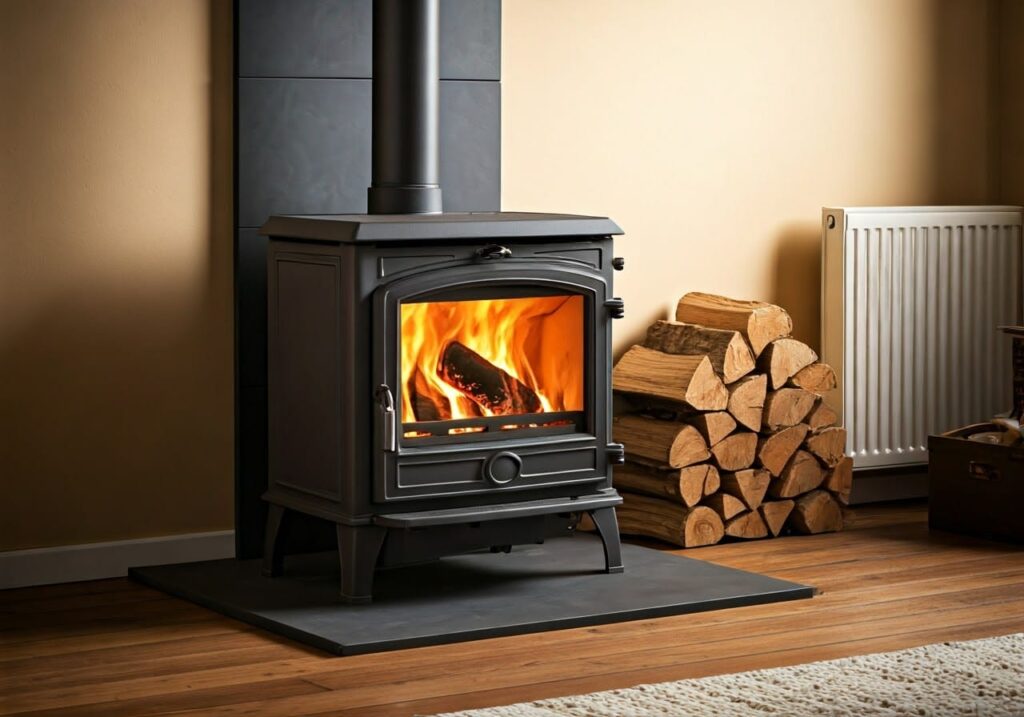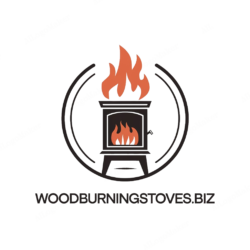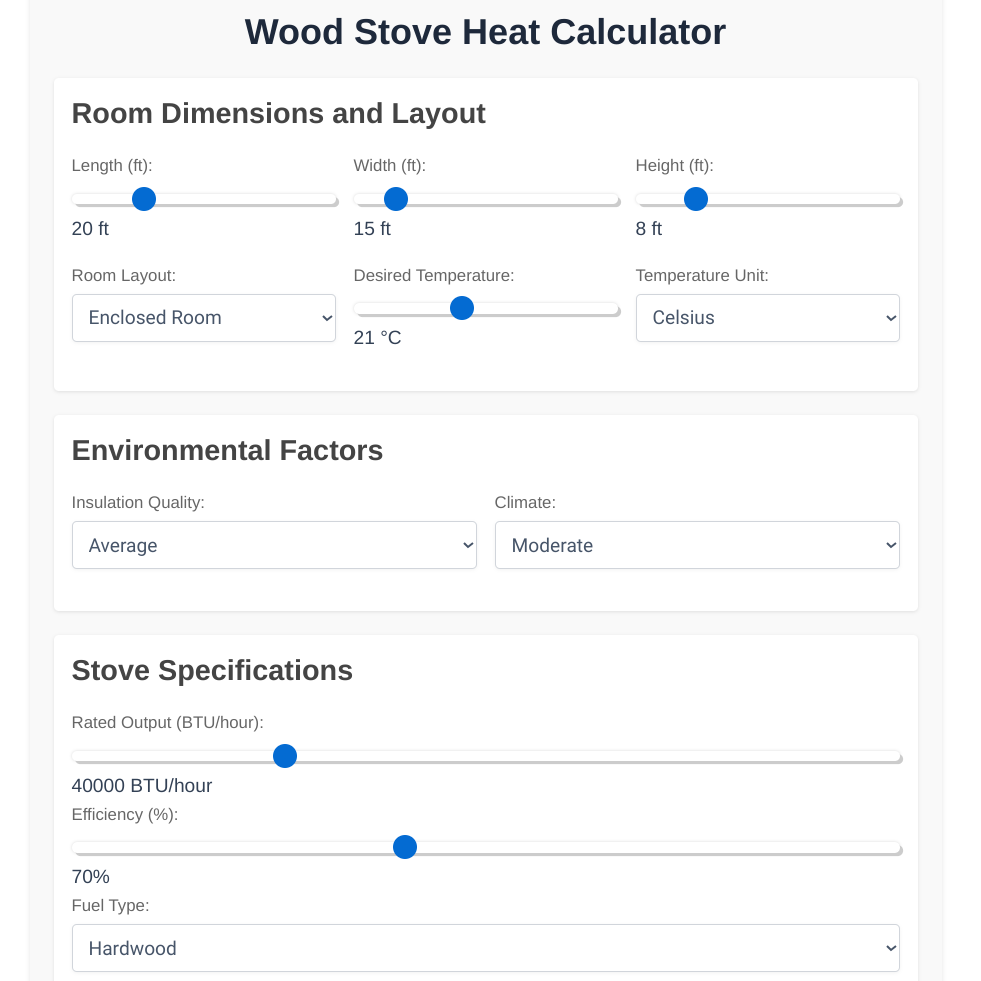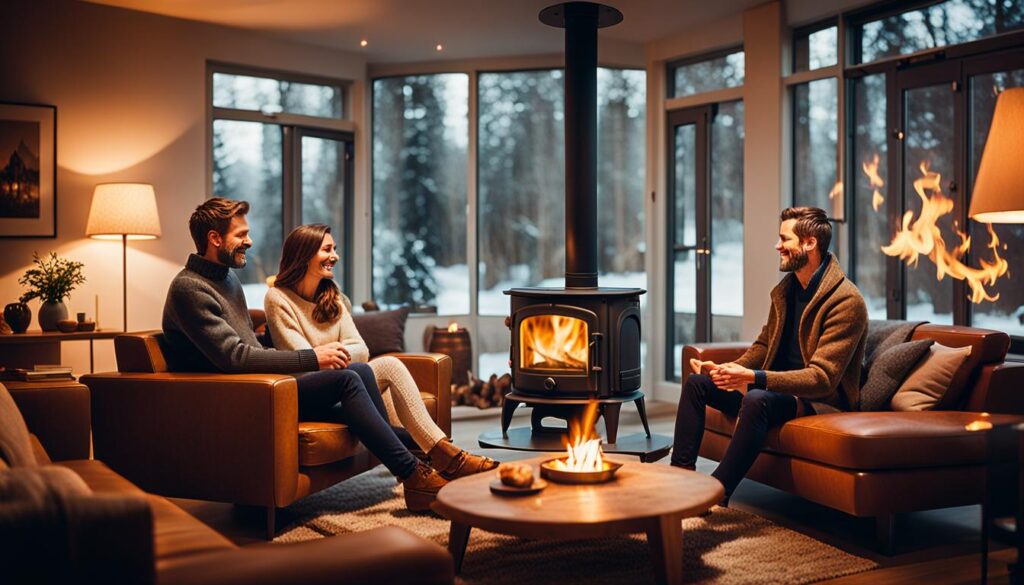As the temperatures drop, a wood burning stove can be a cozy and warm addition to any home. However, with the warmth and comfort comes a significant responsibility – ensuring the safety of your loved ones and property. In this comprehensive guide, we’ll delve into the Wood Burning Stove Safety Features that are paramount for a secure and enjoyable heating experience.

Understanding the Risks Associated with Wood Burning Stoves
Before we dive into the safety features, it’s crucial to acknowledge the potential hazards linked to wood burning stoves:
- Carbon Monoxide Poisoning: Inadequate ventilation can lead to the accumulation of carbon monoxide, a colorless, odorless, and deadly gas.
- Fires and Burns: Unattended stoves, sparks, or overheating can ignite nearby flammable materials or cause severe burns.
- Chimney and Venting Issues: Poorly maintained or incorrectly installed chimneys can lead to structural damage, fires, or gas leaks.
In-Depth Look at Safety Features
1. Advanced Combustion Systems
- How it Works: These systems utilize advanced technology to burn fuel more efficiently, reducing emissions and the risk of chimney fires.
- Benefits:
- Reduced risk of chimney fires
- Lower emissions for a more environmentally friendly option
- Increased fuel efficiency to save you money
- What to Look for: When shopping for a stove with an advanced combustion system, look for keywords like “clean-burn technology” or “secondary combustion.”
2. Heat-Resistant Materials and Construction
- Importance of Heat Resistance: A stove’s construction materials play a crucial role in preventing overheating and potential fires.
- Types of Heat-Resistant Materials:
- Refractory ceramics
- High-temperature steel
- Thermal shock-resistant materials
- Benefits:
- Ensures the stove’s integrity and prevents potential fires
- Provides a durable and long-lasting product
3. Secure Door and Glass Systems
- The Dangers of Unsecured Doors: An unsecured door can lead to accidental burns or fires from open flames or hot surfaces.
- Features to Look for:
- Tight-sealing door mechanisms
- Heat-resistant ceramic glass for safe viewing
- Secure fuel loading systems
- Benefits:
- Prevents accidental burns from open flames or hot surfaces
- Provides a safe and secure fuel loading process
4. Automatic Shut-Off and Overheat Protection
- The Importance of Automatic Shut-Off: This feature prevents uncontrolled overheating, reducing the risk of fires or stove damage.
- How it Works: The stove is equipped with thermal sensors that detect overheating and automatically shut off the stove.
- Benefits:
- Protects against uncontrolled overheating and potential fires
- Prevents stove damage from excessive heat
5. Clear Venting and Chimney Requirements
- The Dangers of Improper Venting: Incorrect venting can lead to chimney fires, gas leaks, or carbon monoxide poisoning.
- Features to Look for:
- Explicit guidelines for proper venting and chimney installation
- Clear instructions for safe clearance and maintenance
- Benefits:
- Prevents chimney-related hazards, such as fires or gas leaks
- Ensures safe and proper stove operation
Additional Safety Tips for Wood Burning Stove Owners
- Regular Maintenance: Schedule annual inspections and cleanings to ensure your stove is in good working condition.
- Proper Installation: Ensure correct venting and chimney installation to prevent potential hazards.
- Safe Fuel Handling: Store fuel in a dry, well-ventilated area, away from the stove.
- Unattended Stove Precautions: Never leave a burning stove unattended, especially around children or pets.
- Local Regulations Compliance: Familiarize yourself with and adhere to local burning regulations
The Wrap for Wood Burning Stove Safety Features
When selecting a wood burning stove, prioritizing Wood Burning Stove Safety Features is not just a recommendation, but a necessity. By understanding the potential risks and actively seeking out stoves with advanced safety features, you’ll be well on your way to enjoying the warmth and comfort of your wood burning stove, safely and responsibly.
Final Safety Checklist for Your Wood Burning Stove
- Regular Maintenance: Schedule annual inspections and cleanings.
- Proper Installation: Ensure correct venting and chimney installation.
- Safe Fuel Handling: Store fuel in a dry, well-ventilated area, away from the stove.
- Unattended Stove Precautions: Never leave a burning stove unattended, especially around children or pets.
- Local Regulations Compliance: Familiarize yourself with and adhere to local burning regulations.


